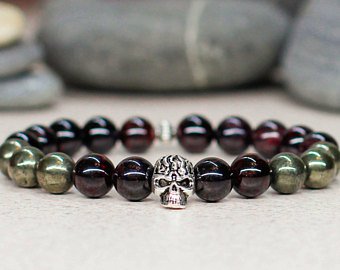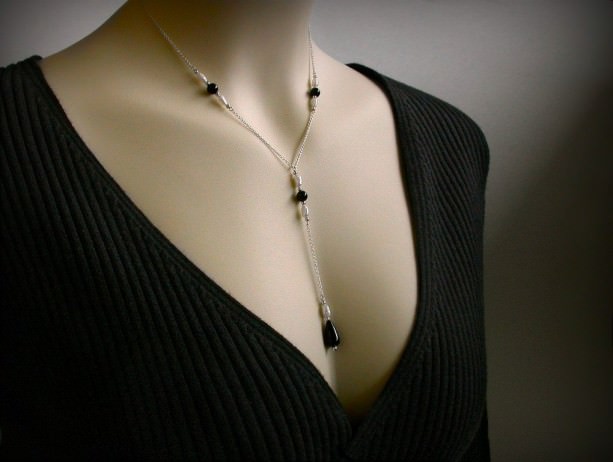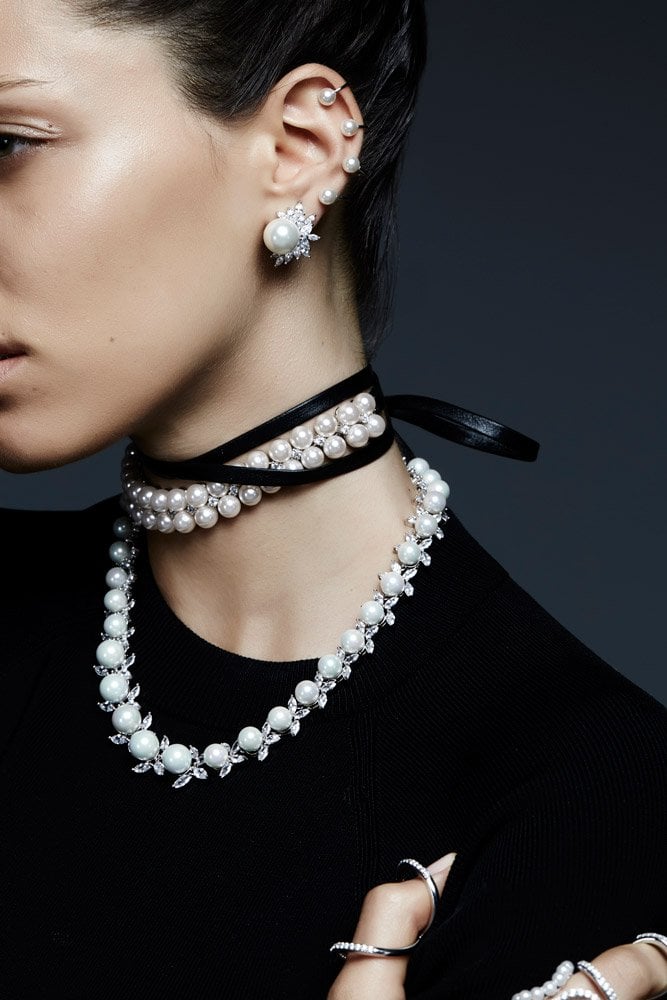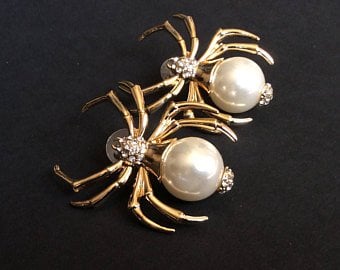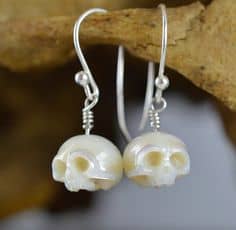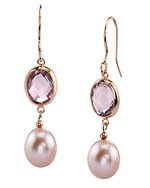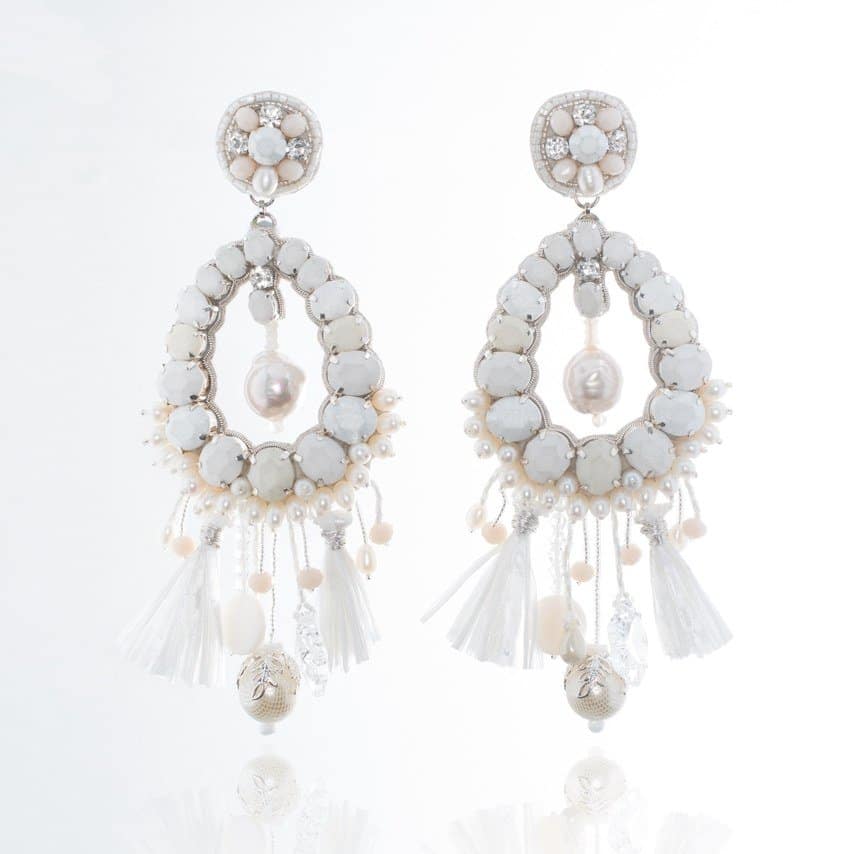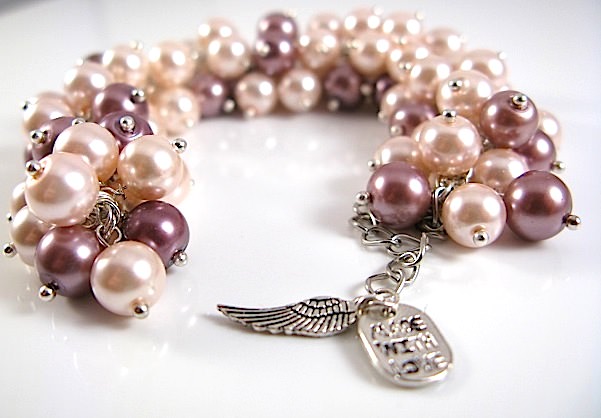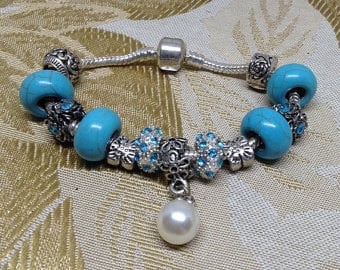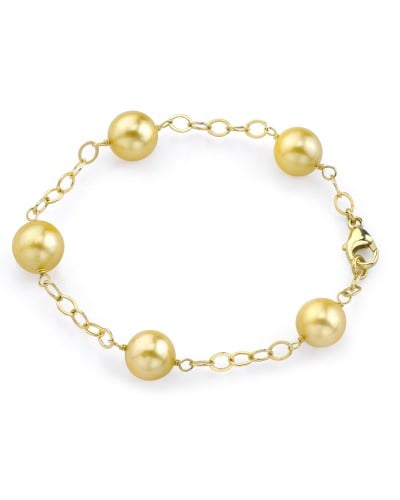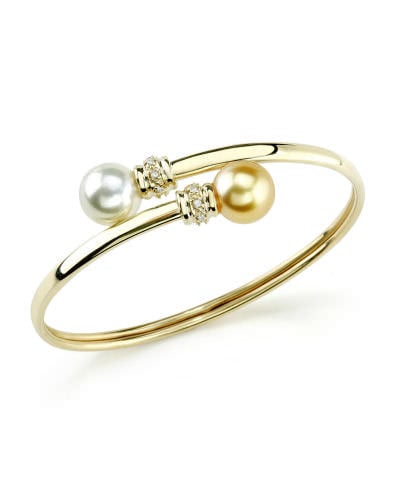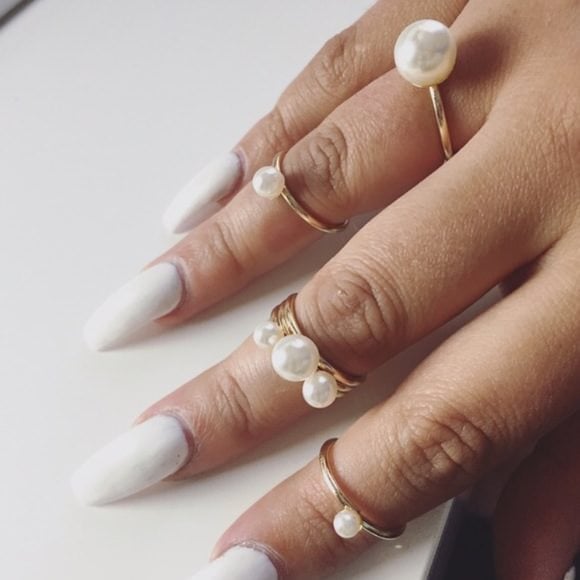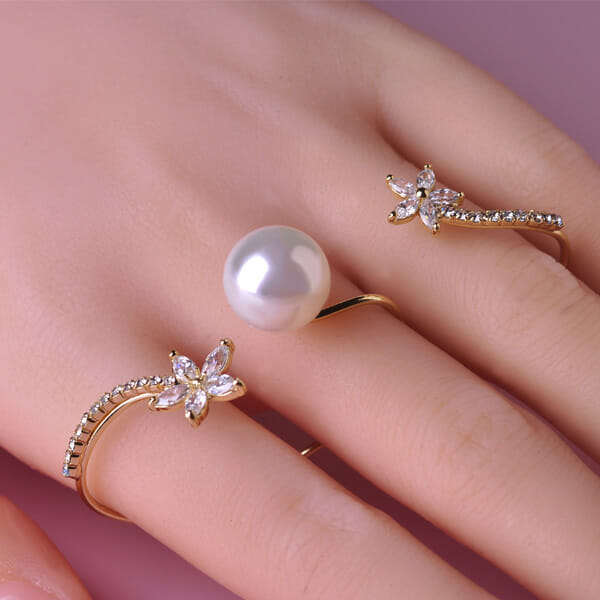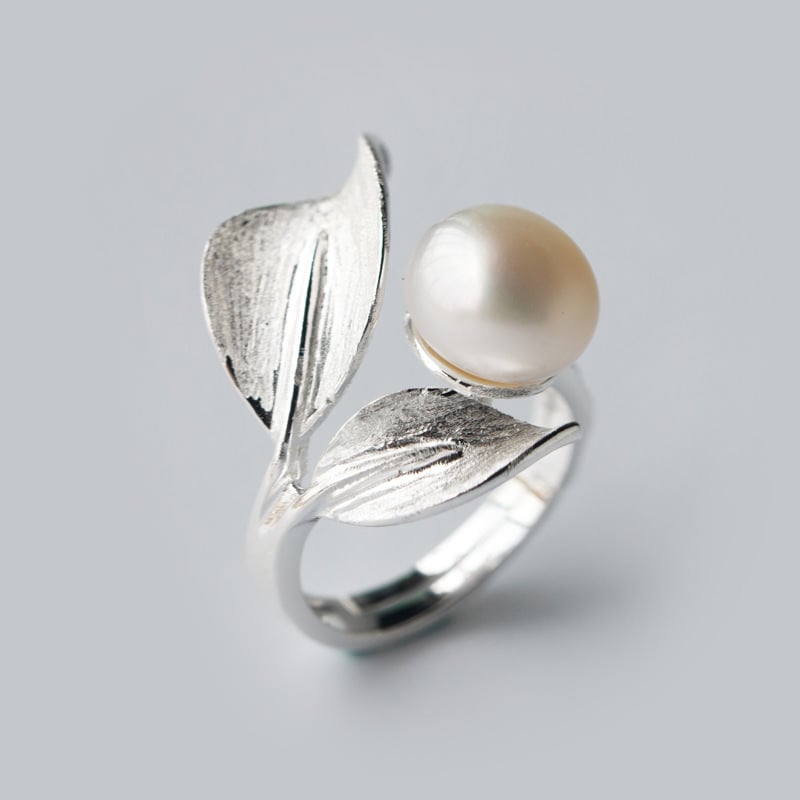Last Updated on June 20, 2021 by TPS Blog Admin
In the world of authentic pearls, there are two primary types, often compared to one another: natural pearls vs cultured pearls. Fact is, both types are real gemstones, but it’s the way they are formed that makes them different.
What is a cultured pearl?
A cultured pearl is a genuine pearl, produced by an oyster or mollusk, but with human assistance. There are two main types of cultured pearls: freshwater and saltwater pearls.
Creation: The Biggest Difference Between Natural Pearls vs Cultured Pearls
How is a natural pearl created? A natural pearl is formed organically when an irritant finds itself inside the oyster’s soft tissue muscle accidentally. This irritant, such as seawater sand or dust, activates the oyster’s defense mechanism, causing it to produce layers of secretions. The secretion (also called nacre) slowly develops into a natural pearl.
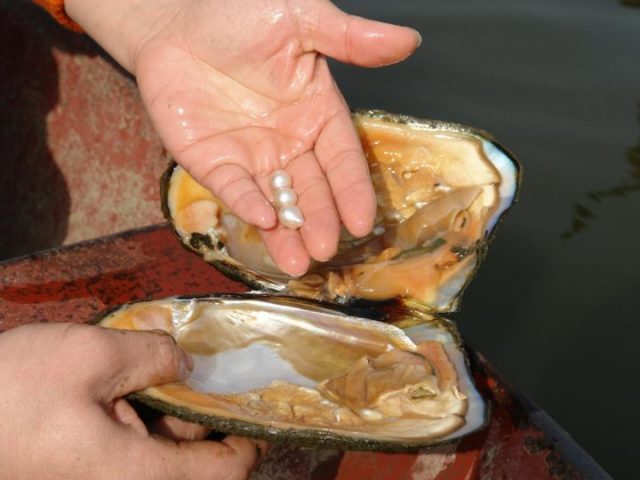
What’s the difference in the way a cultured pearl is formed? Basically, a cultured pearl is born through the very same process. However, the main difference between natural pearls vs cultured pearls is that the irritant is not inserted accidentally.
Cultured pearls are considered real pearls – but they aren’t formed without human intervention. Most pearls available on the market today are cultured. Natural pearls are much rarer and, therefore, much more valuable.
Cultured South Sea Pearls are the most valuable type of cultured pearl on the market today. These pearls come in a gorgeous variety of sizes, shapes and colors. A strand of South Sea pearls featuring large gems can be as expensive as $100,000 or more.
Both natural and cultured pearls are formed when an irritant enters the mollusk or oyster, causing it to respond to the irritant. The difference is that when cultivating pearls, the irritant is purposely placed inside the oyster through human intervention.
What Is a Cultured Pearl
Pearl cultivation involves the process of pearl farmers physically inserting an irritant, such as a shell bead nucleus, inside the soft tissue of the oyster. From there, the layers of nacre are formed naturally, just like with natural pearls.
So, the main difference between natural and cultured pearls is the way the secretion process begins. With natural pearls, the process takes place in the ocean, without any human intervention. On the other side, cultured pearls require the assistance of pearl farmers to begin the nacre-forming process.
Why Are Natural Pearls So Rare (with Higher Pearl Value)?
As mentioned above, natural pearls are created in the ocean. It can take more than 100,000 of these deep-sea-living creatures to make just one strand of pearls. And, with so many sea-borne predators, ocean-pollution, oyster divers and other factors that cause premature deaths for the animals, finding quality gems when diving for pearls is quite rare these days.

As a result, the demand and the value of natural pearls is set to go through the roof. The rarity of the gemstones increases the costs, making them not affordable to most. Pearl cost is one of the biggest differences between natural pearls vs cultured pearls.
Cultured pearls tackle this problem and more. Different types of oysters produce different pearl colors, sizes

Cultured Pearl Quality
Because cultured pearls are created in controlled environments, the survival rates of the oysters are much higher. This allows pearl farmers to produce high-quality, authentic pearls at higher rates than what can be obtained by oyster divers.
As a matter of fact, according to the American Gem Society, most of the ocean’s natural pearls have already been harvested by pearl divers.
Therefore, even though the quality of a cultured pearl may be the same as that of a natural pearl, the cultured version is generally much more affordable because of its rarity.
4 Benefits of Cultured Pearls vs Natural Pearls

Black Tahitian Pearls. Image Credit: tahiti © 123RF.com
When comparing natural pearls vs cultured pearls, there are some advantages to both types of gemstones. Here are four of the benefits of cultured pearls over their ocean-life counterparts:
1. Same Pearl Quality
Once the irritant is placed inside the oyster, the rest of the cultured pearl growth process is natural. The animal is tended to and nurtured by pearl farmers who want nothing more than a successful crop. With luck, experience
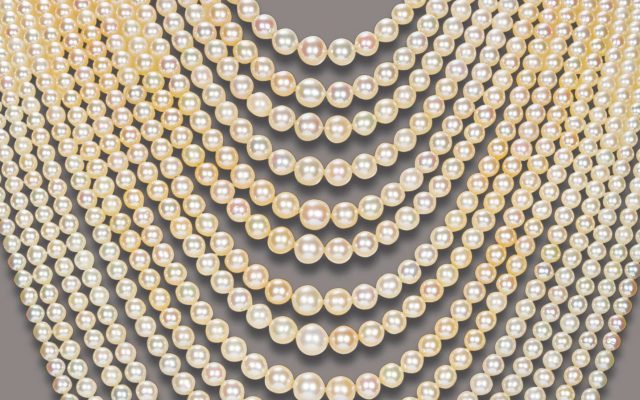
EDITOR’S NOTES:
Given technological advances in the cultivation process throughout the past decade, some now consider cultured pearls to possess even more quality than natural pearls. For example, though freshwater pearls are widely thought of as the most affordable type of pearl, they now regularly feature a deep luster and a high surface quality. What does this mean for you? Finding a stunning piece of pearl jewelry which is high-grade and budget-friendly has never been easier.
2. Lower Pearl Cost
Because natural pearls are so rare, they are extremely expensive. There are few, if any, left in the seas to harvest anymore. So, buying natural pearls means finding a vintage pearl or antique pearl jewelry, which often comes with astronomical costs.
Cultured pearls are nurtured on pearl farms, giving them pretty decent survival rates. And, to deflate one of the most common pearl myths floating around, cultured pearls are REAL pearls.
3. Safer Than Pearl Diving
There are numerous dangers of diving for pearls in the open waters. Firstly, this profession is not only dangerous, but almost obsolete these days. Yet, some still go out diving for oysters, hoping to come up with a nice supply of quality natural pearls. But fact is, pearl divers risk suffering from run-ins with:
- Hypothermia
- Decompression sickness
- Environmental risks
- Dangerous sea creatures
- Deep water blackout
- Drowning
So many deaths were reported in the pearl diving industry throughout its thriving years. This also contributes to the rarity and still-soaring costs of buying natural pearls. Cultured pearl farms are privately owned, and safe for both the cultivators and the oysters.
4. More Pearl Jewelry Styles
FASHION TIPS
The increase in the supply of pearls available on the market has not only led to more affordable prices, but in addition, designers being able to experiment with new and unique designs. In recent years, tin cup pearl jewelry has become quite popular. These fashion-forward pieces feature a chic aesthetic and can be integrated into a variety of different outfits for some extra style.
Just like natural pearls, cultured pearls are created in both freshwater and saltwater. Different types of oysters are used to cultivate different saltwater and freshwater gems in various:
- Pearl types
- Gem colors
- Pearl sizes
- Pearl shapes
- Jewel lusters
- Pearl values
- Pearl grades
Because natural pearls are so rare these days, most of the pearl jewelry you see on the market today features real cultured pearls. Using the same premise used by Mother Nature to create gems of the sea, pearl farmers know how to increase the chances of creating different types and styles of pearls.
This makes them one of the most versatile gems on the jewelry market. So, when shopping for natural pearls vs cultured pearls, expect to find more of a variety on the cultured market.
The Benefits of Cultured Pearl Jewelry vs Natural Pearl Jewelry
What are the benefits of buying natural pearls? Well, basically, it means you have arrived. You are probably one of those fashionable divas or fashion kings who has the money to spend of thousands of dollars-worth of natural pearl jewelry. Hey now!!!
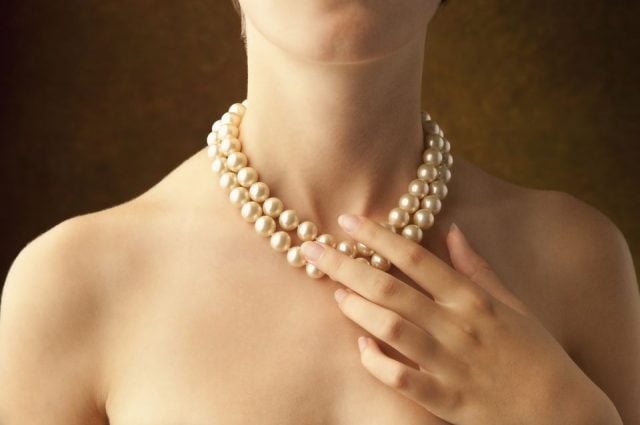
But, if you’re like most of us, you simply can’t afford the costs of buying natural pearls. Instead, concentrate on the benefits of cultured pearls. This will get you so much more for
These are just some of the differences of natural pearls vs cultured pearls. And, always remember, cultured pearls are real pearls.
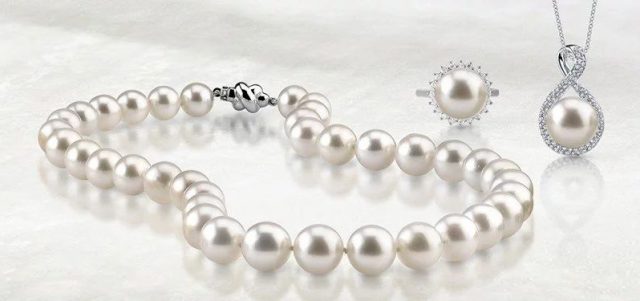
PEARL SPOTLIGHT:
White South Sea Pearls are some of the most stunning pearls cultivated today. Discover their unique beauty and mesmerizing radiance and opt for a bracelet, ring, a pair of earrings or necklace in crisp white pearls, complete with utterly lustrous gold finishes.
- Your Ultimate Guide on the Coquette Aesthetic - April 8, 2024
- Strings Attached: Justin Timberlake Goes Pearlcore on SNL - January 31, 2024
- 39 Types of White Gemstones: Properties, Uses and Benefits - November 22, 2023


